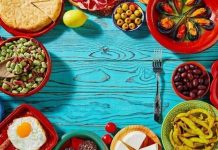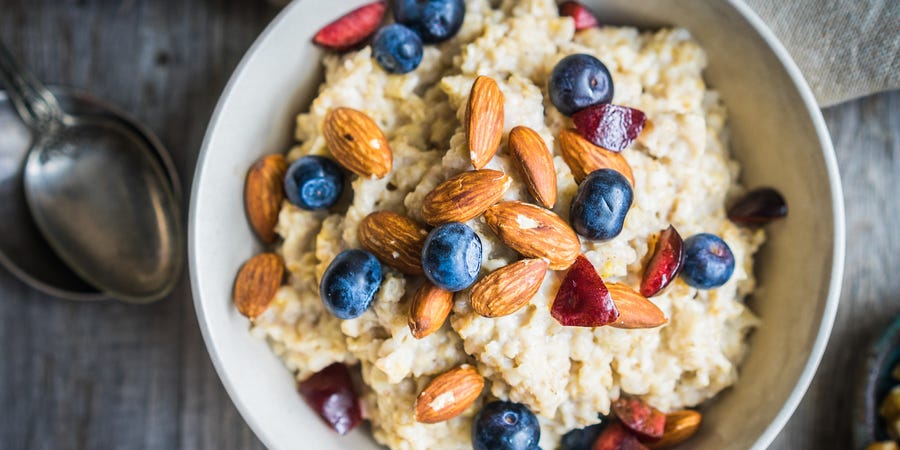If you have diabetes, it’s important to eat the right foods to maintain healthy blood sugar levels.
For example, eating healthy carbohydrates, foods high in fiber, and healthy fats can help prevent blood sugar spikes. But eating high-carbohydrate foods that contain lots of sugar can make it more difficult to control your diabetes, says Deena Adimoolam, MD, Assistant Professor of Medicine, Endocrinology, Diabetes, and Bone Disease at the Icahn School of Medicine at Mount Sinai.
Here’s which foods are best to eat if you want to lower blood sugar and keep it under control.
What is the glycemic index?
Knowing the glycemic index of foods can help you make better dietary choices and help you manage diabetes. That’s because the glycemic index rates carbohydrates by how quickly and how much they raise blood sugar, on a scale of 1 to 100.
Low-glycemic foods have higher amounts of fiber, vitamins, and minerals. Because of their high fiber content, these foods are digested slowly, and therefore have a more gradual impact on blood sugar. People with diabetes should try to eat more low-glycemic foods to avoid blood sugar spikes.
If you have diabetes, it’s also important to keep track of the carbs you’re eating per day and per meal, as having too many carbs with a high glycemic content can spike blood sugar levels. And even if you don’t have diabetes, eating high glycemic foods can increase your risk for type 2 diabetes, heart disease, and being overweight.
RELATED ARTICLES
- Side effects of not drinking enough water
- Having a few alcoholic drinks a week may be better for your brain than avoiding alcohol altogether, a study found
Here are some examples of low-glycemic foods you can eat to lower blood sugar and prevent spikes.
1. Whole grains
Eating whole grains, like brown rice, will have a less extreme impact on your blood sugar levels because they aren’t digested as quickly, Adimoolam says. That’s because whole grains have more fiber.
A 2007 study in Hormone and Metabolic Research found that eating a fiber-rich diet (more than 30 grams of fiber per day), in particular through whole grain products, can lower your risk for type 2 diabetes.
Examples of whole grains include:
- Barley (GI = 22)
- Bulgur (G1 = 46)
- Buckwheat (GI = 49)
2. Fruits and vegetables
Fruits and vegetables are examples of healthy carbohydrates that are rich in fiber. For people with diabetes, doctors recommend eating five portions of fruits (2 portions) and vegetables (3 portions) per day to maintain healthy blood sugar levels — though you should talk with your doctor to come up with an individualized meal plan for your needs.
Ripe fruits tend to have a higher glycemic index than less ripe fruits. Eating fruits with the skin can be more beneficial, Adimoolam says, since the skin contains more fiber and can help regulate your blood sugar.
Although all fruits supply nutrients, dried fruit and fruit juice have more concentrated sources of natural sugars. When possible, choose whole forms of fruit, such as fresh or frozen.
Adimoolam says most vegetables are healthy for people with diabetes, though starchy vegetables like potatoes, sweet potatoes, and plantains have a higher sugar content and should be eaten in moderation.
Some examples of low glycemic fruits and vegetables include:
- Apples (GI = 40)
- Oranges (GI = 40)
- Broccoli (GI = 10)
For more information, read about the best types of fruits for diabetes.
ADVERTISEMENT
3. Oatmeal
Oats are another good choice for people with diabetes because of their low glycemic index value and high fiber content.
A 2015 review published in the journal Nutrients found eating whole oats with at least 3g of soluble fiber daily can help type 2 diabetes patients control blood glucose levels by increasing insulin sensitivity.
You should make sure to opt for steel-cut or rolled oats, as these varieties of oatmeal are less processed, which means they absorb into the bloodstream more slowly. Try to avoid instant oatmeal with added sugar, and if you’re mixing in fruit or other ingredients into your oatmeal, be mindful of their added sugar and total carbohydrate content.
4. Nuts
Nuts are low-glycemic, high in fiber, and a healthy source of fat. They also contain beneficial nutrients and vitamins, like vitamin E, omega-3 fatty acids, and magnesium, which improve heart health and contribute to a balanced diet.
A 2011 study published in the Journal of the American College of Nutrition found that consuming more than a ¼ ounce of nuts per day decreased type 2 diabetes risk factors, like body mass index and waist circumference.
The healthiest nuts for people with diabetes are:
- Almonds (GI = 20)
- Cashews (GI = 20)
- Peanuts (GI = 14)
5. Garlic
There is evidence to suggest that garlic can help control blood sugar by raising insulin levels in the body. That’s because some compounds in garlic — including allici, allyl propyl disulfide and S-allyl cysteine sulfoxide — can help increase insulin sensitivity.
For example, a 2017 study published in Food and Nutrition Research found that consuming between 0.05 to 1.5g of garlic (from supplements) per day significantly reduced blood glucose levels in type 2 diabetes patients.
Try spicing your foods with garlic powder or adding some crushed-up garlic cloves when you’re cooking. However, you should consult your doctor if you plan to consume lots of garlic, since it can also contribute to gas, nausea, and heartburn (plus, bad breath). Garlic may also be dangerous for people on blood thinners.
The bottom line
Foods that contain fiber, protein, and healthy fats are better for lowering blood sugar and managing diabetes when compared to foods high in fast-acting carbohydrates, such as those high in added sugars and refined grains. The glycemic index can be a helpful measurement to determine which foods to eat, but it’s important to remember that everyone reacts to foods differently.
“Some foods considered as low glycemic index foods could potentially cause a spike in one’s blood sugar quicker than it would another person,” Adimoolam says. Blood sugar levels can also depend on other factors, like what medications an individual is taking and what else they are pairing with the specific food.
If you have diabetes or may be at risk, you should consult your doctor to determine what the right diet is for you. For more information, you can read about the best diets for diabetes, and the best snacks for diabetics.





















